Kruger National Park. November 2018
1. From Richmond to Kruger National Park.
Chelmsford Nature Reserve.
On our way north we spent our first night at Chelmsford Nature Reserve - one of our favourite camping spots in KZN.
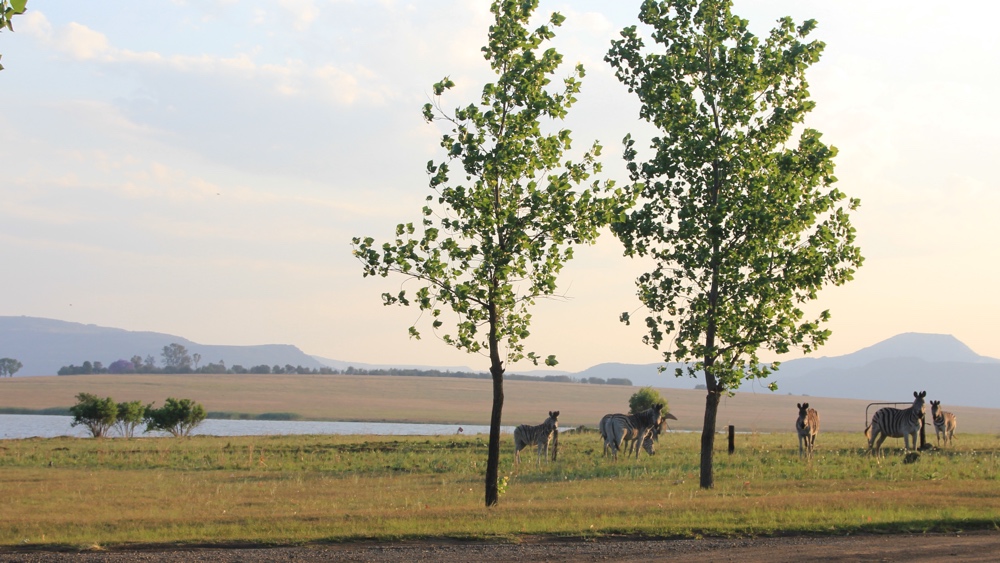
These zebra were right next to the campsite.
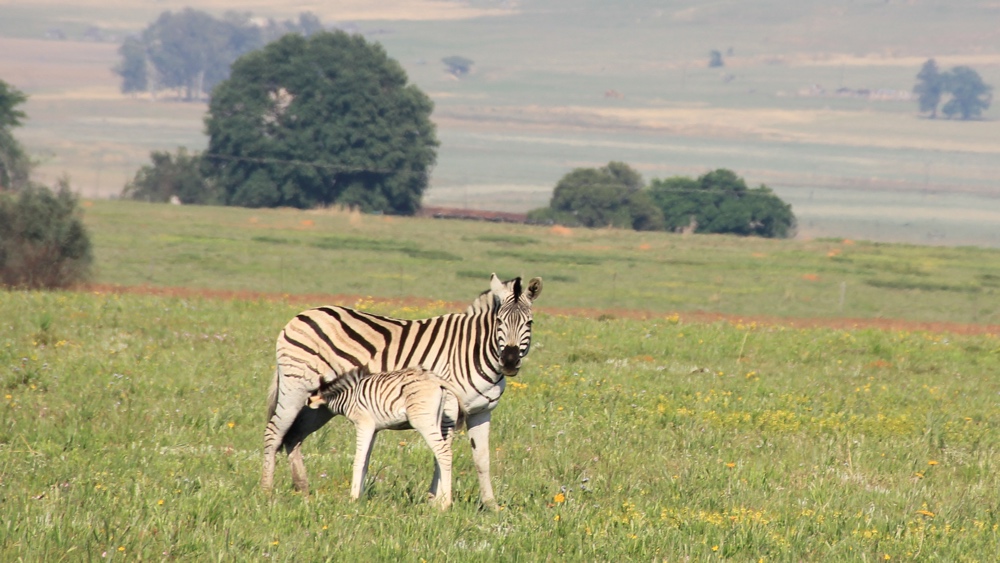
On our way out we saw this zebra with her little foal.
Blouberg Nature Reserve.
I'd read about this Reserve having the largest Cape Vulture breeding colony so decided we'd stay there on our way north.
We stayed at Molope Bush Camp (there are cottages and a tented camp in other parts of the Reserve) which has 5 pitches each under a large shady tree and a central ablutions block.
There had been no rain for months so it was extremely dry and most of the few animals that we saw ran off as soon as they heard our vehicle which was disappointing.
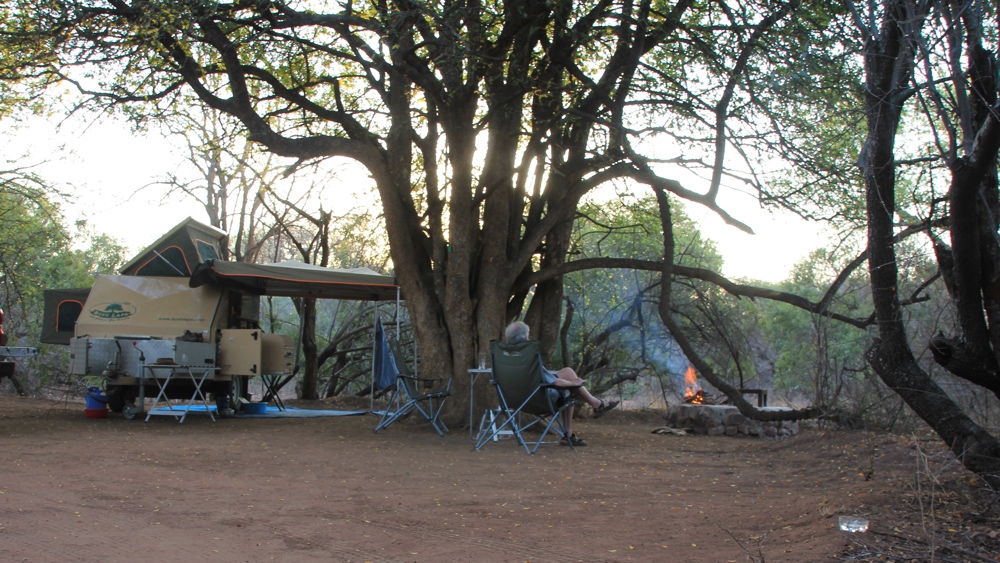
Our campsite.

A francolin at the campsite.
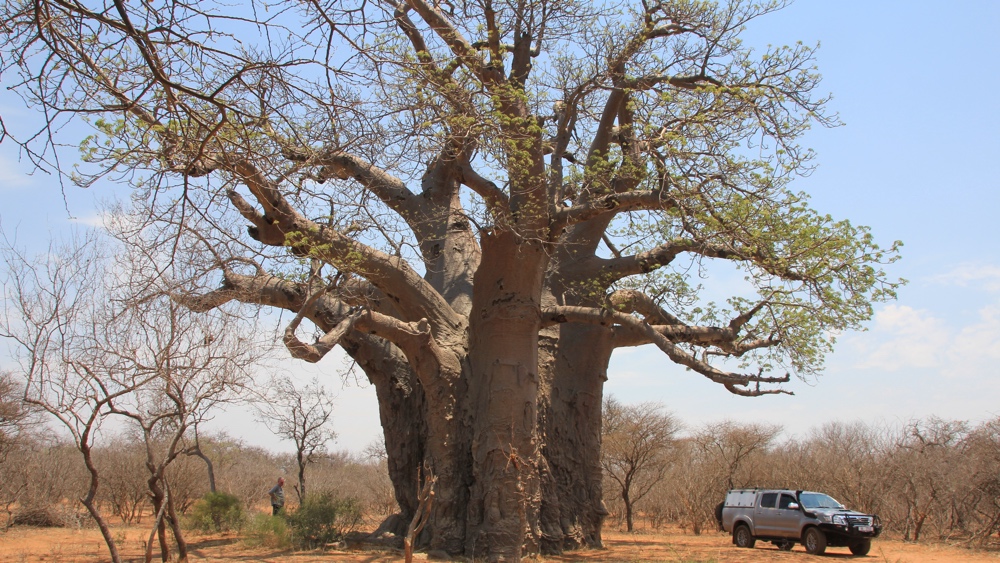
A huge baobab tree.

We saw more giraffe than any other animal.
I'd expected to get a proper map at reception but it was a small A4 sheet which was barely legible so was glad that our Track4Africa GPS map had most of the Reserve tracks shown. It took us about an hour and a half to reach the Cape Vulture colony from the campsite- some tracks needed low 4x4.
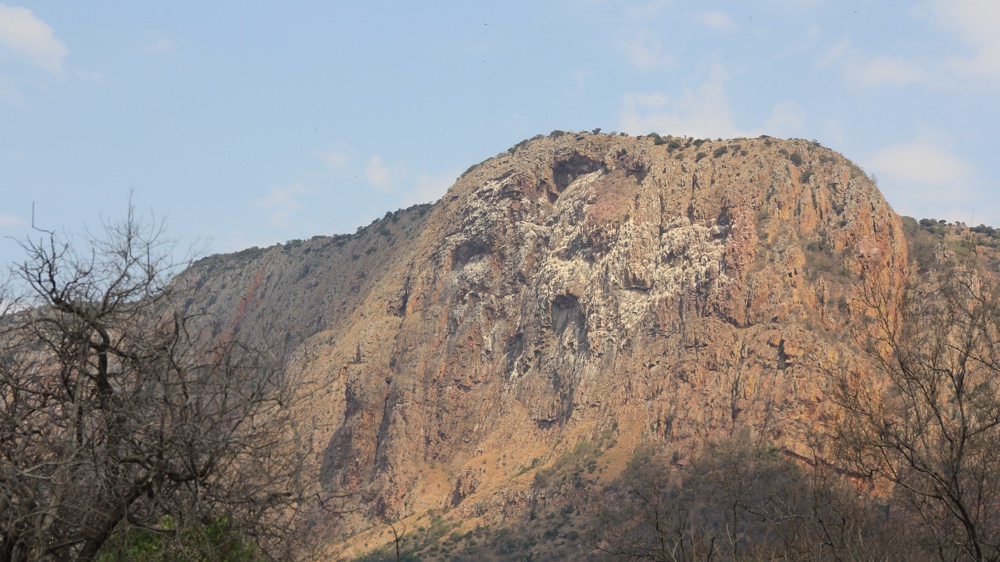
We could see where they were breeding from a long way off by the white patches on the cliffs.
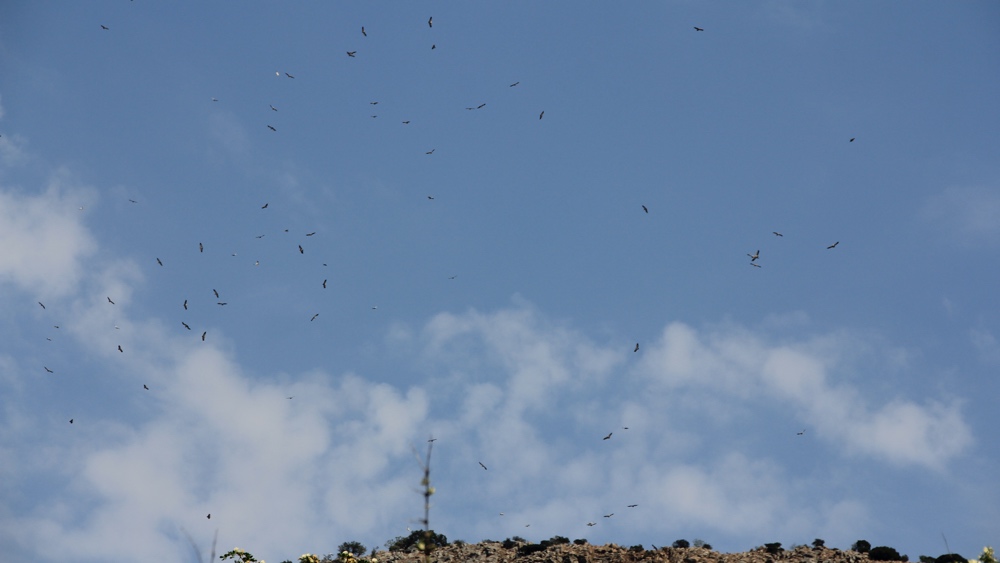
From below the cliffs we did see large numbers of vultures circling above us.
Mapungubwe National Park
The Park borders Botswana and Zimbabwe and has 2 sections. The campsite is in the smaller Western section and it's a 40km drive to the gate at the Eastern Section so we stayed in the Western part. We got a lovely shady site under a huge tree but our stay was marred by the monkeys which were a real pain. We saw some of them trying to chew through the shade netting on the raised roof of our neighbours caravan and were advised to lower our roof and put away the bed section if we went out in the vehicle to ensure that they didn't attempt to get into our van.
There's a high level fence around the camp to stop elephants entering but smaller animals often wander through the campsite.
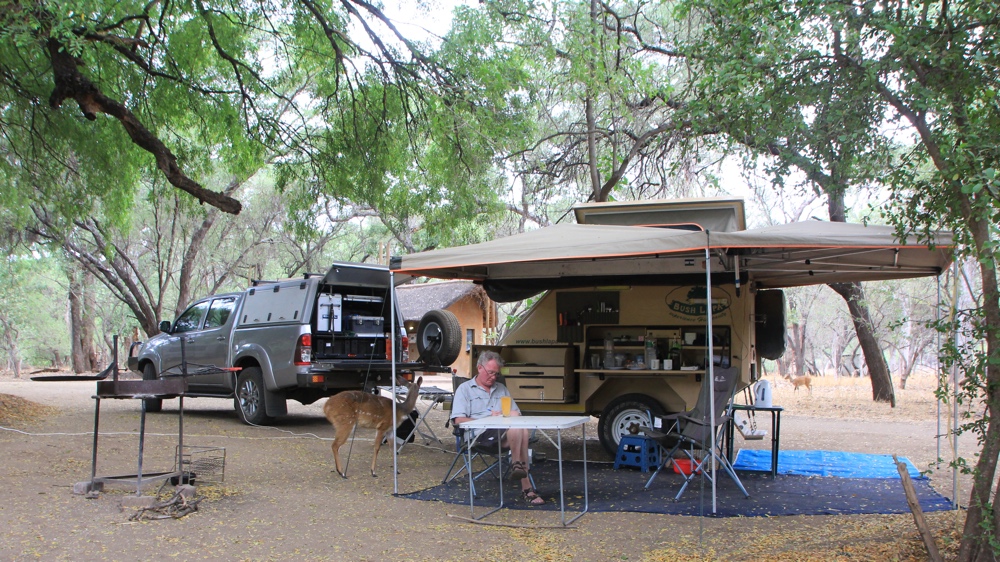
Our campsite with a visiting bushbuck.
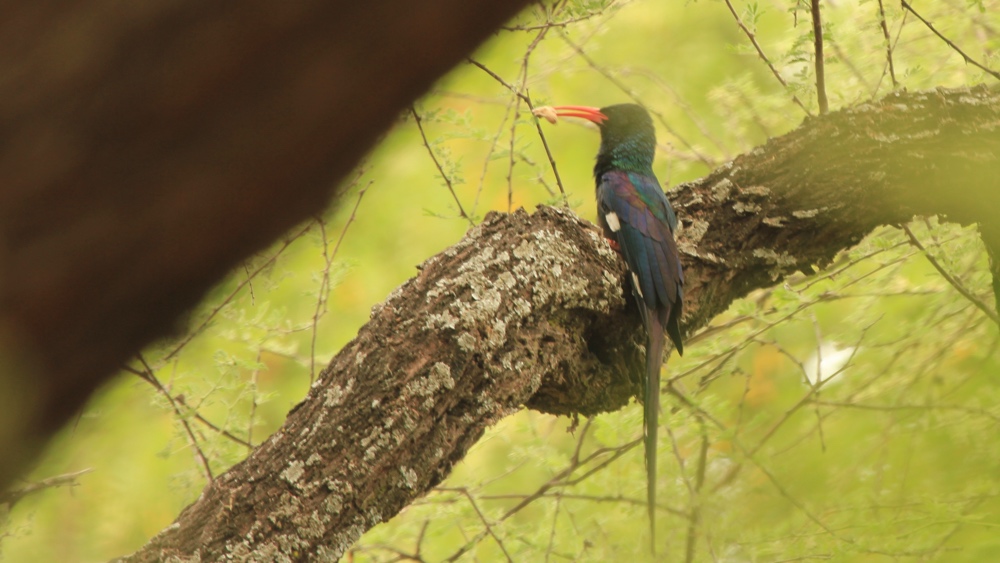
There were lots of birds in the campsite trees - this is a green wood hoopoe.
The Limpopo River is the border between South Africa and Botswana in the Western Section of the Park. One morning we drove along the track next to the river. Some parts of the river had pools of water but other sections were completely dry.

The Limpopo River.
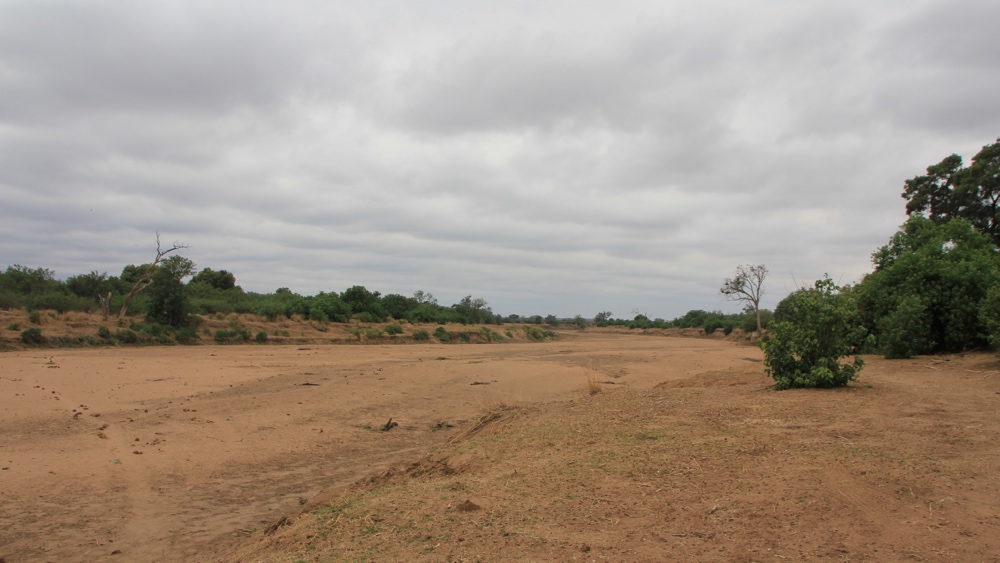
A dry section of the river.
When we visited this park at Christmas 2011 I spent most of the time at the waterhole, about 4km from the camp. However this time there was hardly any water and very few animals or birds to be seen which was disappointing so we did drive round various tracks within the Reserve and also some just outside the main park.
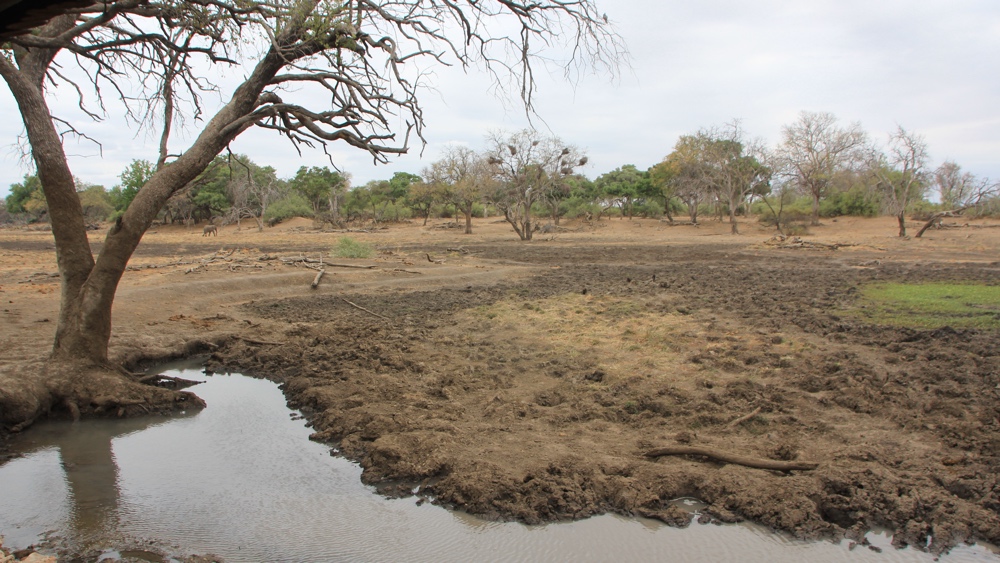
The view from the hide.
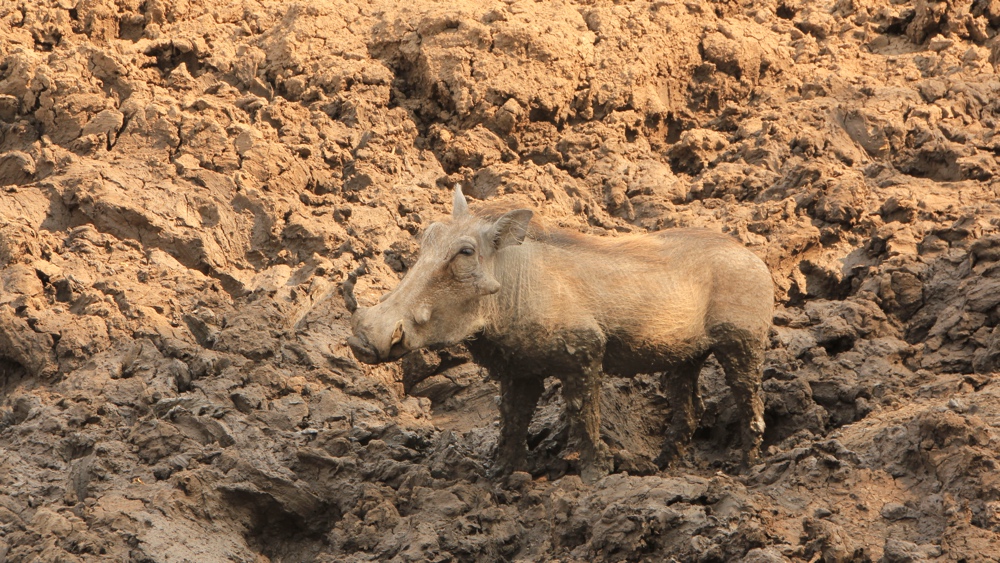
A warthog enjoying a muddy patch.
On our way back from the waterhole we stopped to watch a group of elephants, it's aways facinating observing the interactions between family groups.
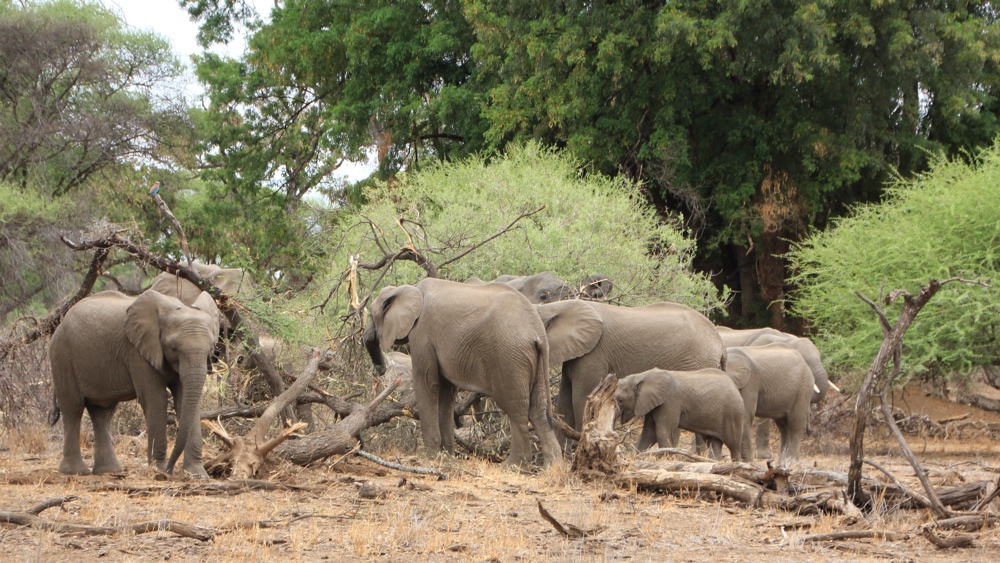
Several elephants browsing on a fallen tree.
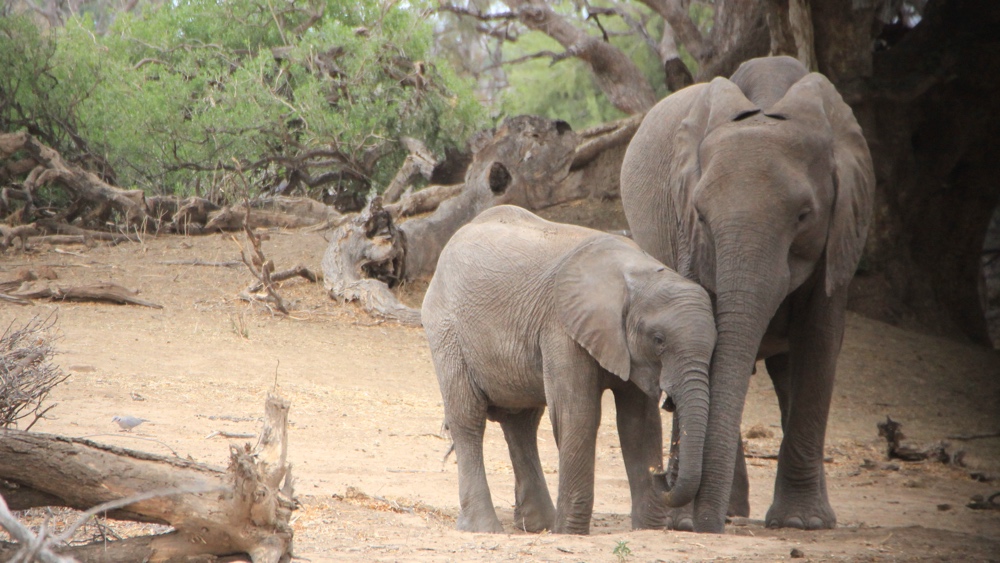
An elephant with her calf.
We saw some signs for a 4x4 Eco Trail and, as the track was shown on our Tracks4Africa GPS, decided to follow it. We needed 4x4 and sometimes low ratio to negotiate the trail and were glad of the GPS as, from time to time the trail wasn't clear over the rocky sections. We travelled through some interesting scenery and came across a group of wildebeest and a few elephants at a waterhole.
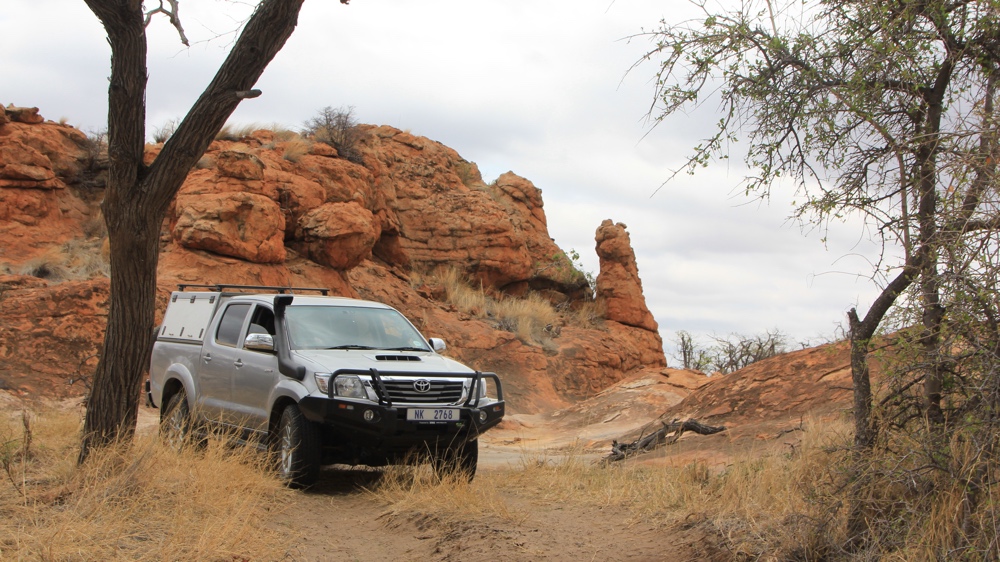
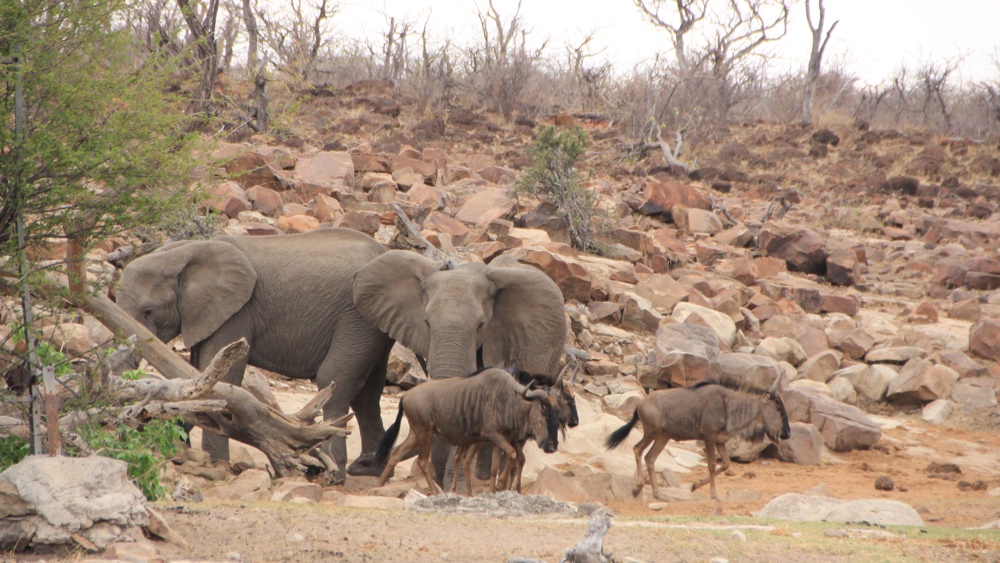
Last updated: January 2021